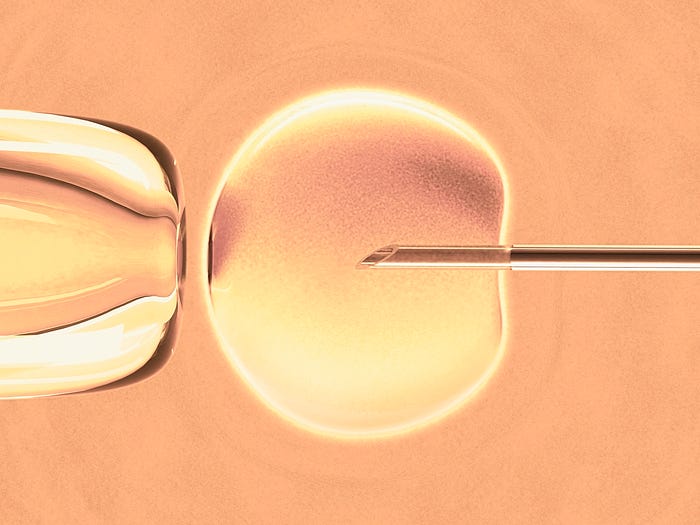Member-only story
Inside the Experiment That Could End Infertility
In the future, we may be making eggs and sperm from our skin. A lot has to happen first.

 The year is 2069, and you and your partner are ready to become parents. But like millions of others, you need reproductive technology to help make it happen. So you head to your local fertility clinic to drop off some samples. After a long wait in reception, a technician calls you into a private room. She asks you to roll up your sleeve, and after a quick procession of disinfectants and local anesthesia near your biceps, she punches out a piece of skin about the size of a pencil eraser and drops it into a tube of clear liquid.
The year is 2069, and you and your partner are ready to become parents. But like millions of others, you need reproductive technology to help make it happen. So you head to your local fertility clinic to drop off some samples. After a long wait in reception, a technician calls you into a private room. She asks you to roll up your sleeve, and after a quick procession of disinfectants and local anesthesia near your biceps, she punches out a piece of skin about the size of a pencil eraser and drops it into a tube of clear liquid.
“Remind me,” she says, “did you want sperm or eggs?”
This is the promise of in vitro gametogenesis (IVG), a technology that one day could allow scientists to turn any cell in the body — from skin, hair, and more — into a sex cell, and subsequently an embryo. It could be the future of assisted baby-making if you do some creative hand-waving at the long list of technical, safety, legal, financial, and ethical caveats.
IVG uses stem cells — the biological clay that can form every body part — to build sex cells, which in humans are sperm and eggs. If successful, the technique could solve infertility due to age, cancer, or…

